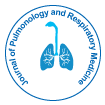Management of Acute Pulmonary Edema: Best Practices in Critical Care
Received Date: Dec 02, 2024 / Published Date: Dec 31, 2024
Abstract
Acute pulmonary edema (APE) is a life-threatening condition characterized by the accumulation of fluid in the alveolar spaces, leading to impaired gas exchange and respiratory distress. It is often associated with heart failure but can result from other causes such as renal failure, trauma, or high-altitude exposure. Management of APE in the critical care setting involves rapid diagnosis and the initiation of appropriate therapies to alleviate symptoms, stabilize the patient, and address the underlying cause. Standard treatment options include pharmacological interventions like diuretics and vasodilators, non-invasive ventilation, and invasive mechanical ventilation in more severe cases. Continuous monitoring and individualized management plans are crucial for optimizing outcomes. This review highlights best practices in the management of APE, focusing on pharmacologic strategies, mechanical ventilation techniques, and supportive care. Early intervention and an evidence-based approach are essential to improving patient survival and minimizing complications.
Citation: Tim J (2024) Management of Acute Pulmonary Edema: Best Practices in Critical Care. J Pulm Res Dis 8: 232. Doi: 10.4172/jprd.1000232
Copyright: © 2024 Tim J. This is an open-access article distributed under the terms of the Creative Commons Attribution License, which permits unrestricted use, distribution, and reproduction in any medium, provided the original author and source are credited.
Share This Article
Recommended Journals
Open Access Journals
Article Tools
Article Usage
- Total views: 317
- [From(publication date): 0-0 - Apr 02, 2025]
- Breakdown by view type
- HTML page views: 162
- PDF downloads: 155
